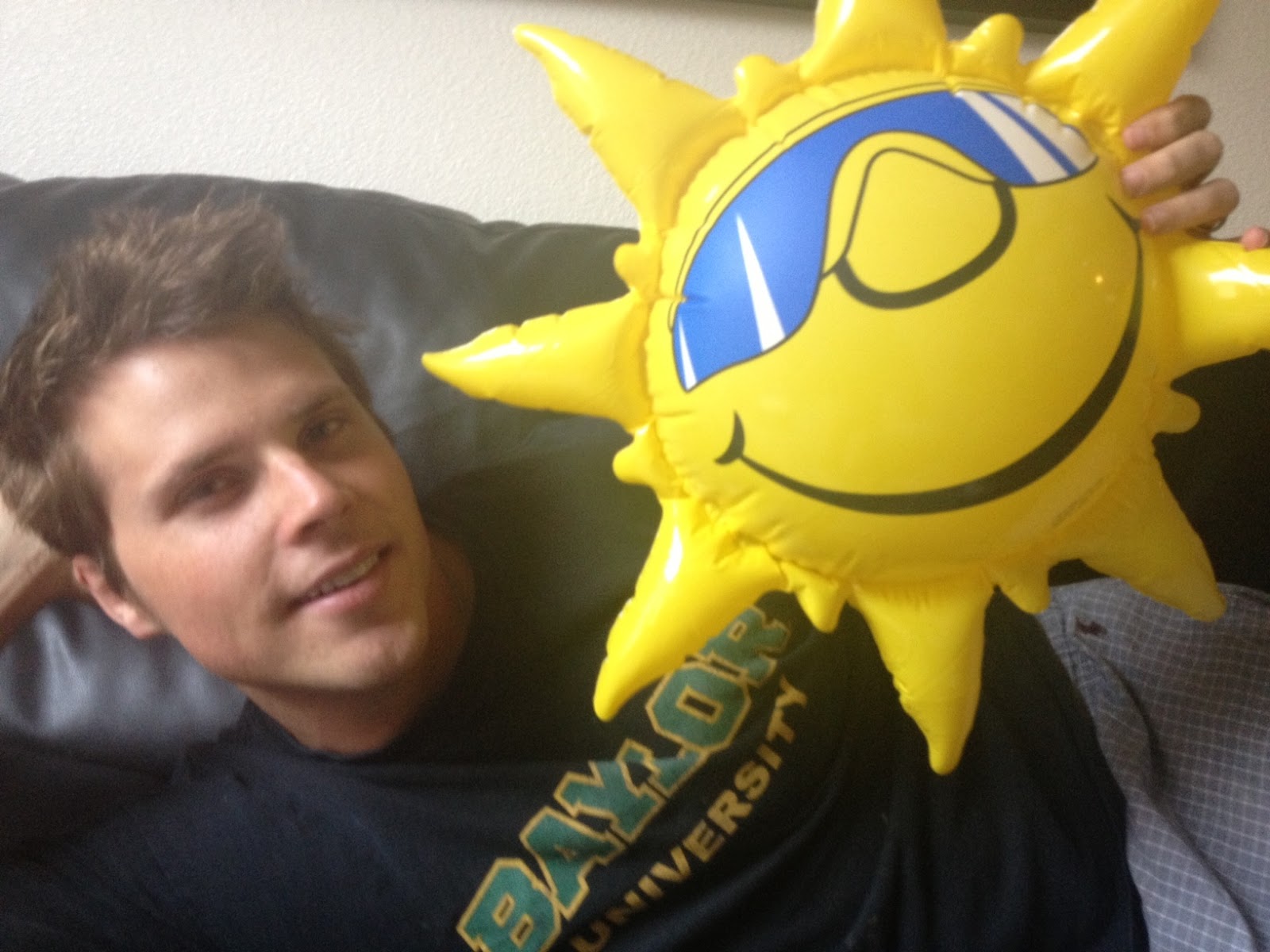Of course, Mr. Sun will come out when we sing and dance to "Mr. Sun" (Mister Sun, Sun, Mister Golden Sun, please shine down on me, etc). I used the song in a program two years ago and had costumes made (sun, tree, etc) so we always like to sing and act out that song. Here's the movements we use:
Mister Sun, Sun, Mister Golden Sun: The "sun" walks out in front of the audience with three or four students trailing behind him/her.
Please shine down on me: The sun stops and the students surround him/her, kneeling and pleading (hands clasped together).
Oh Mister Sun, Sun, Mister Golden Sun: The sun walks backwards with the students following to the side of him/her.
Hiding behind a tree: The sun walks behind the "tree".
These little children are asking you to please come out so we can play with you: The students near the sun stand with their hands on their hips while the tree acts out singing these words.
Oh Mister Sun, Sun, Mister Golden Sun: The "sun" walks out from behind the tree with the students trailing behind him/her.
Please shine down on me: The sun stops and the students surround him/her, kneeling and pleading (hands clasped together).
The sun says, "OK"
As a partner song for that performance, I used "Sol, Solecito" an easy mi-so-la song in Spanish. There are some versions of the song on Youtube, but each one I checked out had horrid quality (singing, video, the whole bit). I'd suggest Googling it if you're not confident singing in Spanish for your own reference.
You can download the slides free on my TPT store, but I'd suggest reading through the post for more tips about teaching the song and incorporating a listening activity ;)
Kiddos can use this slide as a vocal exploration exercise (make sure they are singing Mi-So-La correctly in a key of your choice - C and D are used in the song) - they can sing on "sun" or a neutral syllable
Some students can even hold up the plastic sun in front of the others in the front of the room to lead the class.
Here are the lyrics of the song on the steady beat page (note - the English translation is not intended to be used, use the Spanish):
There's also a rhythm icon and rhythm slides.
The melodic icons look like this (plain). Try having the students tap their heads for "la", shoulders for "so" and tummies for "mi".
.png) |
| Melody Icons |
.png) |
| Melody Icons without La |
.png) |
| Melody Icons with La |
.png) |
| Melody on Staff (C Major - lines) |
.png) |
| Melody on Staff - D Major - Spaces |
A great piece to add a listening element to these sun songs is "Morning Song" from the William Tell Overture.
I don't know about your kiddos, but my little ones love listening exercises. 85% of them automatically start moving around without any direction from me (which is often times the goal as I'm observing them) but some look to me for direction/ideas/etc. Which is why, unless I'm doing a Dalcroze exercise or something specific where I don't want to help them, I usually structure listening exercises in this manner:
"Blind" Listening: Play a short (30 seconds or so) excerpt of the piece. Ask the students to describe it, tell you what it is about, make a connection (I heard this song when...). Often, I will ask them to listen for something specific (an instrument, a dynamic or tempo change, a "B" section, etc). It is so important to give them something to listen to in order to capture their attention and focus. Sometimes, I'll say, "What do you think I want you to listen for?" and play the piece (obviously after many listening examples) - what a great way to get kids listening critically. For this piece, I'll discuss the English Horn (which happens to be an instrument I can play and my favorite woodwind) and discuss the tempo of the song (with little ones, you may just be saying "slow" instead of discussing musical dynamic terms):
"Guided" Listening: I use a listening map, PowerPoint, rhythms taken from the song, structured non-locomotor movement or instrument activity, as we listen a second time - for this particular song: let students watch the following Youtube video to get their creative juices flowing:
"Movement" Listening: I create, or have them create, or borrow from a textbook, resource, or video, a movement for students to use while they listen. For this song: Have the students create their own movement when you play the piece again. I think this year I'll be the "sun" and carry around our plastic friend while the other students follow behind as the "clouds" carrying blue scarves. Students are creating their own movement but they have me and my movements for a frame or reference. Students should be moving slowly, with long, legato movements (sweeping arms, small twirls, etc).
"Critical" Listening: By now, the students have heard the piece multiple times and it is time for either an assessment or critical discussion. For this piece, I ask the students to identify what other instrument they hear "talking" with the English Horn (the flute). We discuss the different "timbres" of the instruments. We can even take a vote on which instrument students prefer (although English Horn usually wins for us, haha).
I hope you have a sunny time with these activities ;)


.png)

.png)
Hi, Emily! What is your source for this tune? Thanks! Janell
ReplyDelete